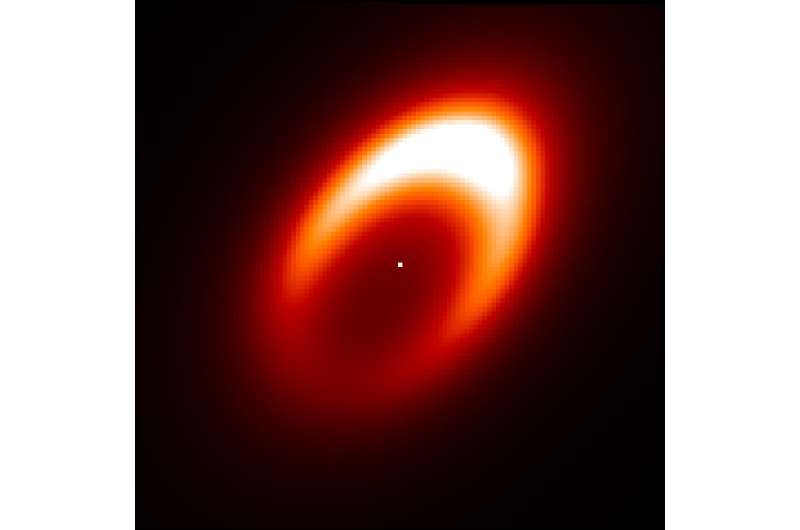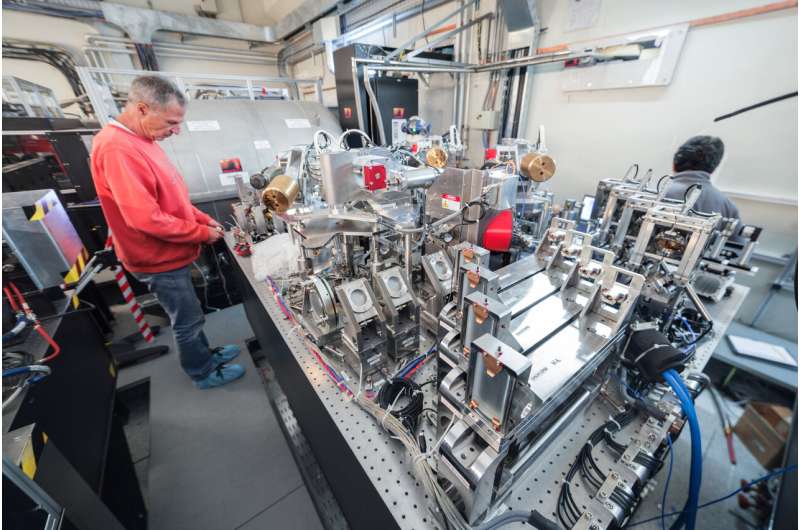Astronomers see whirlwind around possible exoplanet in the making

An international team of astronomers led by researchers from the Netherlands has discovered a whirlwind of dust and debris in orbit around a young star. It is possible that a planet is forming within the debris. The scientists made the discovery during the time that designers and developers of an astronomical instrument get as a reward for their work. They will soon publish their findings in the journal Astronomy & Astrophysics.
The exoplanet in the making orbits the star HD 163296 in a close orbit. HD 163296, about 330 light-years away from Earth, is a young star much studied by astronomers in the constellation of Sagittarius. Previously, astronomers found evidence for the formation of three large exoplanets in a wide orbit around the star. Now, a fourth planet may be forming close to the star.
The researchers led by Jozsef Varga (Leiden University, the Netherlands) studied the star during four nights in March and June 2019. They focused their telescope on the inner part of the circumstellar disk. The astronomers observed a ring of warm, fine dust at a distance from the star comparable to Mercury's orbit around our sun. What was striking was that one part of the ring was much brighter, i.e., hotter, than the rest of the ring. This hot spot seemed to have an orbital period of about one month.
The astronomers suspect that the hot spot of warm, fine dust is a vortex in the disk from which a planet could form. Simulations could verify their suspicion. While in the rest of the disk, dust and pebbles clump together, in the vortex, the debris is actually ground into fine dust. That fine dust is visible in the hot spot.

MATISSE
The researchers made their discovery with the new MATISSE instrument. That instrument combines and analyzes light from four telescopes of the ESO Observatory's Very Large Telescope on Cerro Paranal, in northern Chile. This creates a combined telescope with a virtual diameter of 200 meters. The MATISSE instrument is made specifically to analyze infrared radiation. Such radiation is created when an object, such as a planet or dust disk, gives off heat. The instrument is cooled to prevent it from emitting infrared radiation itself.
The Netherlands Research School for Astronomy (NOVA) built all the lenses and mirrors in the cooled part of MATISSE together with Dutch industry. In 2018, MATISSE saw its first light with a series of test observations.
For the researchers and engineers from, amongst others, Leiden University, University of Amsterdam, Radboud University Nijmegen, SRON and the NOVA Optical Infrared Group, this first, real scientific result marks the beginning of further research. One of the goals is to study more stars with dust disks and especially dust disks in which earthlike planets can form.
More information: J. Varga et al. The asymmetric inner disk of the Herbig Ae star HD 163296 in the eyes of VLTI/MATISSE: evidence for a vortex?, Astronomy & Astrophysics (2020). DOI: 10.1051/0004-6361/202039400
Journal information: Astronomy & Astrophysics
Provided by Netherlands Research School for Astronomy



















